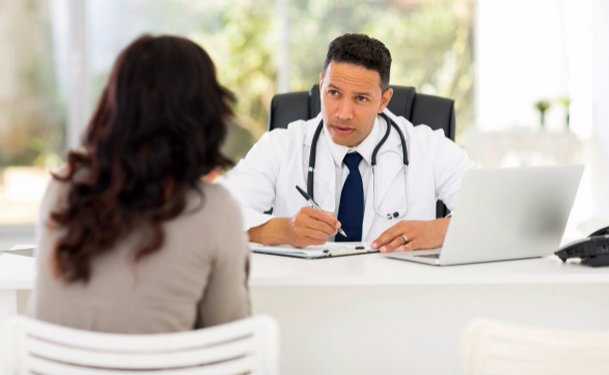How are varicose veins and spider veins related to venous disease? You might think those unsightly bulging veins and squiggly marks under your skin are just a cosmetic issue, but varicose veins and spider veins could actually be a sign of venous disease.
What is venous disease?
Venous disease occurs when some of your veins no longer function properly. This usually occurs in the extremities, like the legs, where blood is furthest from your heart.
The body has two major types of blood vessels: veins and arteries. Arteries are relatively thick, muscular tubes, that contract to push blood away from your heart and through all of the tissues in your body, and back to your heart again.
Veins contain one-way valves instead of muscles. Veins don’t contract to push blood back toward your heart—they rely on their one-way valves and muscle contractions from your calves and other nearby muscles to move your blood back to your heart. When these valves in your veins fail, blood can flow backward (reflux) and pool in the parts of your body furthest form your heart, which are usually the legs.
Symptoms of venous disease
Venous disease can cause your blood to pool and the veins to bulge and become varicose or spider veins.
In addition to varicose and spider veins, you could also experience:
- Heavy or tired-feeling legs
- Swelling in your legs and ankles
- Changes in skin color—your legs might darken, or look reddish, and you could also have patches of discoloration
- Sores that don’t heal properly—this can be a very serious condition that is difficult to treat and severely impacts your quality of life
What are the causes of venous disease?
Sitting for long periods can lead to venous disease. Walking around causes your leg muscles to squeeze the veins and help push the blood back to your heart. When you sit for long periods, your veins don’t contract and release, which causes blood and fluids to pool. This is explains why your feet tend to swell on long flights or road trips.
Sedentary lifestyles are linked to venous disease. Your veins not only rely on your leg muscles but on all the muscles in your body, including your diaphragm, to keep blood moving in the right direction.
Age and heredity can lead to venous disease as well. Some people have a genetic predisposition towards vein issues. Also, it’s natural for your veins to weaken as you age, especially if you are also sedentary. For these reasons, vein issues may crop up as you grow older.
How can I improve my vein health?
Exercise
The best way to maintain and improve your vein health is through exercise. You don’t need to start running marathons, or join an exercise boot camp to make a difference—you just need to get moving. In fact, just 30 minutes of movement a day is enough. Things you can try:
- The next time you go shopping, park farther away from the entrance than normal, and make one or two circuits of the store instead of heading straight for the items you need. Together, those changes can easily add up to 30 minutes of walking.
- Take frequent breaks to get up from your desk and walk around your office. If you have a job where you are tied to your desk, stand up and march in place for five minutes. Do that six times and that’s half an hour.
- If you can, eat lunch at your desk and then take a short walk during your actual lunch break.
You can also help improve your circulation by elevating your legs for several minutes each day. You can lie on the floor with your legs up the wall, or lie on the couch with your feet resting on the arms, or elevated by pillows so that they are above the level of your heart.
Diet
Maintaining a healthy diet can go a long way in improving your vein health. Try to make these healthy changes:
- Avoid foods that are rich in sodium. They can cause fluid retention, which can put more strain on your veins.
- Drink plenty of water. Staying properly hydrated can actually prevent you from retaining water.
- Fruits, vegetables, unsalted nuts and seeds have antioxidants, like vitamins C, E and K, which help maintain your veins, so replace salty or unhealthy snacks with these choices.
What are the treatments for venous disease?
These treatments can alleviate symptoms of venous disease and improve your vein health. Your doctor can accurately diagnose your vein issues and choose the right therapy for you.
- Compression Stockings: Compression stockings squeeze your leg muscles and veins to encourage blood flow. These garments are good for the early stages of vein disease, and as a preventative measure for those who are not able to be active enough. Compression is often a first step to help alleviate symptoms of venous disease.
- Sclerotherapy: Sclerotherapy injections treat the walls of varicose and spider veins to harden them and cut off blood flow. This reduces the appearance of the spider and varicose veins and closes off faulty veins.
- Laser Therapy: A superficial laser light treatment that can minimize the appearance of some small spider veins. This treatment is usually performed for cosmetic reasons.
- Endovenous Therapy: Uses a catheter with a heating tip to close off deeper and larger veins from the inside. This is a popular treatment for venous conditions.
- Vein Surgery: A technique to close off or remove veins surgically using catheters that have surgical tools at the end.


